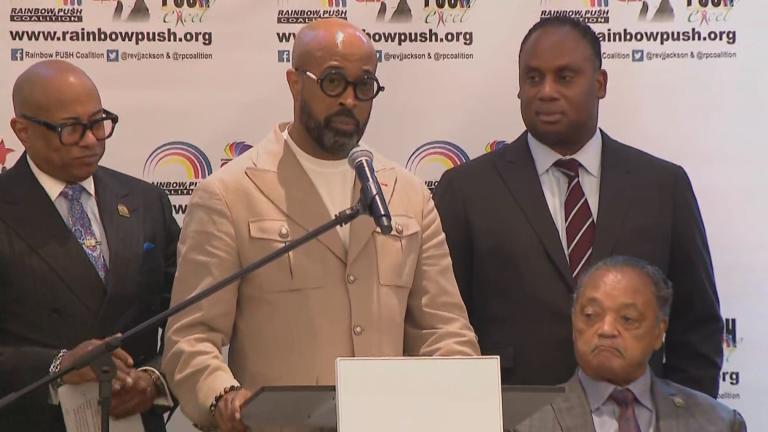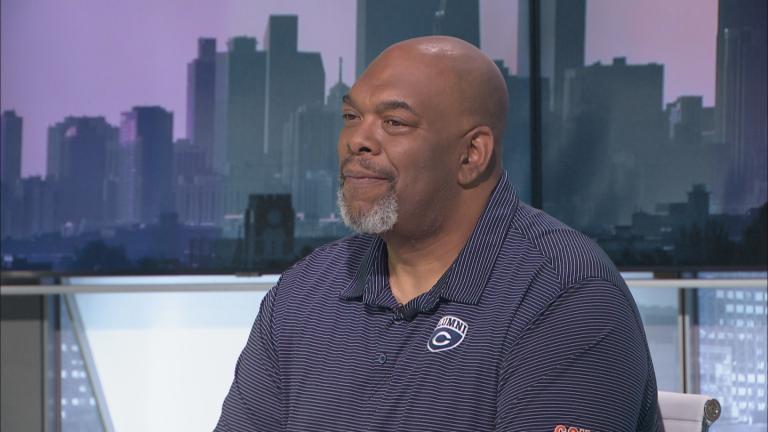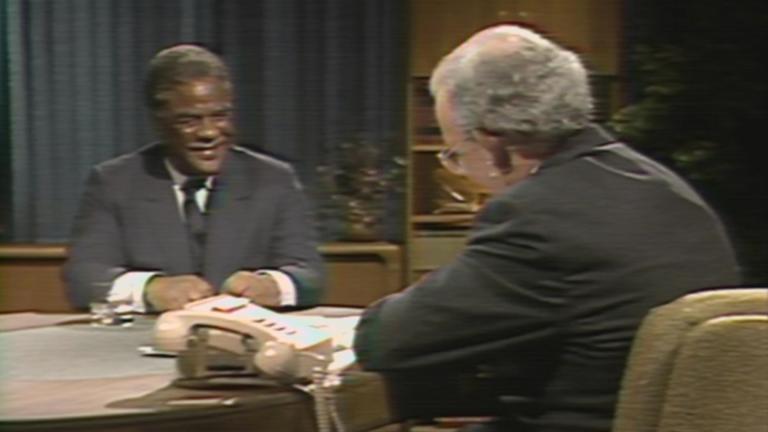In 1973, DJ Kool Herc set two copies of James Brown’s “Sex Machine” album on the turntables at a Bronx house party and tried out his innovative technique of cutting and mixing songs at the drum breaks. Those break beats not only got the party started, they started a revolution as the foundation of hip-hop. Fifty years later, the genre has become an inextricable part of American music and culture.
It’s hard to talk about Chicago’s contributions to hip-hop without first mentioning Kanye West. Brandon Pope, anchor and reporter at CW 26 Chicago and host of the WBEZ podcast “Making,” said West’s early work was foundational to his understanding of hip-hop.
“I think the first track that I resonated with honestly was Kanye West, ‘Through the Wire,’” Pope said. “That’s probably the first hip-hop track I really felt like, yo, this is something I feel, I can understand the message, I connect with it. That’s what really hip-hop music is all about, that connection. That’s why it’s lasted so long.”
Hip-hop journalist Drea O said hometown pride tends to be a hallmark of Chicago hip-hop artists.
“A lot of times with Chicago artists that end up blowing up, they wear Chicago on their back and they’re always like, I’m from Chicago, like Kanye, he constantly mentions that he’s from Chicago,” she said.
And West’s trajectory is closely tied to his Chicago roots, added Pope.
“Chicago is a Midwest city with an identity of being an underdog,” Pope said. “And Kanye West has made that a very big part of his own identity. He talks about the Midwest is young and restless. Just saying that embodies the swagger, the hustle, the heart that Chicagoans have.”
And while West is only one of the superstar rappers to come out of Chicago — Pope name-checked Lupe Fiasco, Rhymefest and Twista, among others — historically speaking, Chicago has not gotten much credit for its contributions to the genre, said music and culture journalist Mark Braboy.
“A lot of people aren’t really fully aware of how Chicago Black music as a whole directly and indirectly impacted hip-hop, whether that’s through gospel, R& B, soul and our own hip-hop innovations in a lot of ways,” Braboy said. “I think that’s something that we’re seeing a little bit more now … because every music critic has a favorite Chicago artist, whether people realize it or not. I don’t think we always may be aware of how much love we really get. But we still have a long way to go. I don’t think the Midwest as a whole gets enough respect or recognition when it comes to how we’ve pushed hip-hop forward.”
Both Braboy and Drea O said the future of Chicago hip-hop had its own beginnings about a decade ago, with the advent of drill rap — and now, they say watch out for artists like Tay Savage, Mello Buckzz and Amari Blaze to be the next big names out of Chicago.
“Chicago has definitely been leading the charge for the drill movement, for better or worse,” Drea O said. “A lot of people argue about whether the drill movement was a positive or a negative thing, but it’s just the reality of a lot of people’s lives in Chicago and it’s just reflecting through the music. It started in Chicago, moved all the way to the U.K. and now there’s Brooklyn drill, the Bronx drill … and it all started from the youth, young rappers from Chicago.”








